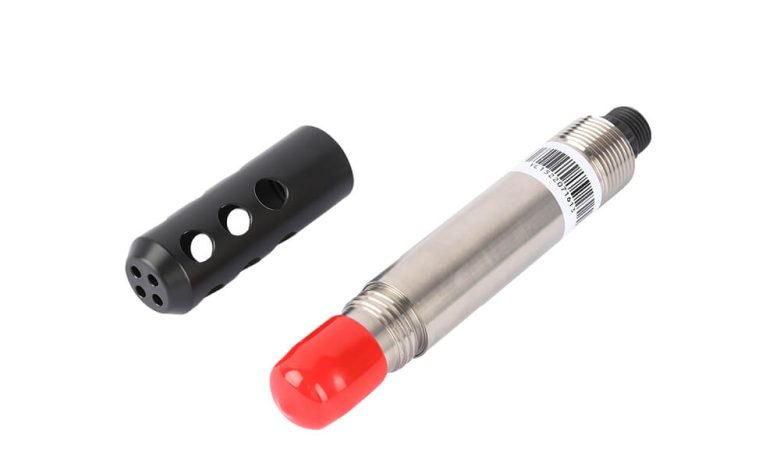The Role of Dissolved Oxygen Sensors in Environmental Conservation and Ecosystem Health

Dissolved oxygen (DO) is a fundamental element in the health of aquatic ecosystems. It supports the life of various aquatic organisms such as fish, invertebrates, and microorganisms, all of which depend on oxygen for respiration. When oxygen levels drop below critical thresholds, ecosystems can experience severe disruptions, including fish kills and the collapse of biodiversity. Given the rising concerns over pollution, eutrophication, and climate change, monitoring dissolved oxygen levels in water bodies has become essential for environmental conservation.
In this context, dissolve oxygen sensor have emerged as a crucial tool in protecting aquatic ecosystems. These sensors not only provide real-time data but also help guide the management of water resources, pollution control, and conservation efforts. This article explores the significant role of dissolved oxygen sensors in environmental conservation and ecosystem health, highlighting their importance, applications, and potential benefits for preserving our planet’s water bodies.
Why Dissolved Oxygen Matters for Ecosystem Health
Dissolved oxygen is a critical parameter in aquatic ecosystems. Oxygen is necessary for the survival of aquatic organisms, including fish, aquatic plants, and various microorganisms. Oxygen is also vital in the breakdown of organic matter. However, many factors can influence DO levels, including:
-
Pollution: Runoff from agriculture, urban areas, and wastewater treatment plants can introduce excess nutrients like nitrogen and phosphorus into water bodies. These nutrients fuel algae blooms, which, when they die and decompose, consume large amounts of oxygen, leading to hypoxic (low oxygen) conditions.
-
Temperature Changes: Water temperature influences the solubility of oxygen, with warmer waters holding less oxygen. As global temperatures rise due to climate change, warmer waters can exacerbate oxygen depletion, particularly in shallow or stagnant water bodies.
-
Overgrowth of Aquatic Plants: In nutrient-rich waters, excessive plant growth can lead to a situation where oxygen levels fluctuate dramatically. During the day, plants release oxygen, but at night, they consume oxygen as they respire, potentially depleting oxygen levels for other aquatic life.
-
Wastewater Discharges: Industrial and municipal wastewater often contains organic material that can deplete oxygen levels as it breaks down in the water.
When dissolved oxygen levels fall too low, aquatic life suffers. Fish and other animals may die or be forced to migrate to more hospitable areas, which can disrupt ecosystems. Long-term hypoxic conditions can lead to the collapse of entire ecosystems, including the loss of species and biodiversity.
How Dissolved Oxygen Sensors Help Protect Ecosystems
Dissolved oxygen sensors are essential tools in understanding and managing oxygen levels in aquatic environments. These sensors are deployed in natural water bodies, wastewater treatment facilities, and aquaculture systems to provide real-time, continuous monitoring of DO levels. By capturing accurate data on oxygen concentrations, these sensors support conservation efforts in several ways:
1. Early Detection of Oxygen Depletion
Dissolved oxygen sensors allow for the early detection of oxygen depletion before it becomes a major issue. In aquatic ecosystems, low oxygen levels can develop rapidly, especially in areas affected by algae blooms or wastewater discharges. By using dissolved oxygen sensors, conservationists and environmental managers can detect early signs of hypoxia or anoxia (complete lack of oxygen) and take corrective action.
For example, in the case of a fish kill due to oxygen depletion, early detection can lead to swift intervention, such as increasing aeration or adjusting water flow to improve oxygen levels. Early warning systems can also trigger alarms, prompting timely actions that help mitigate further environmental damage.
2. Monitoring the Impact of Pollution
As human activity continues to impact natural water bodies, dissolved oxygen sensors are crucial in monitoring the effects of pollution, particularly nutrient runoff from agriculture and urban areas. Sensors can help track the fluctuations in oxygen levels caused by nutrient pollution, allowing for targeted interventions like reducing fertilizer use or improving wastewater treatment processes.
By monitoring DO levels in real time, these sensors can also help measure the effectiveness of pollution control measures over time. For example, if water quality improvements are made, sensors can confirm whether dissolved oxygen levels have increased, signaling healthier ecosystems.
3. Supporting Eutrophication Control
Eutrophication refers to the enrichment of water bodies with nutrients, leading to excessive algae growth and oxygen depletion. This phenomenon is common in nutrient-rich water bodies, especially those near agricultural or urban areas. By continuously monitoring DO levels with sensors, scientists and environmental managers can track the onset of eutrophication and take action to reduce nutrient pollution.
In many cases, dissolved oxygen sensors are used in tandem with other environmental sensors (e.g., for temperature and nutrient levels) to create a comprehensive picture of water quality. This data can help identify when and where oxygen levels are dangerously low, which may correlate with eutrophic conditions. By understanding these patterns, officials can implement best practices, such as controlling nutrient runoff and promoting riparian buffer zones, to restore oxygen levels and improve overall water health.
4. Assessing the Effectiveness of Restoration Projects
For bodies of water that are undergoing restoration or rehabilitation, dissolved oxygen sensors play a key role in assessing progress. Many restoration efforts focus on improving water quality by addressing pollution sources, increasing biodiversity, and reducing the impact of human activity. By continuously monitoring DO levels, environmental agencies and conservation groups can gauge whether their interventions are effective.
For example, after implementing strategies to reduce nutrient pollution or restore wetland areas, the data from dissolved oxygen sensors can show whether these changes have improved the oxygen levels in the water. This allows for adaptive management, where further measures can be taken if needed.
5. Optimizing Aquatic Habitat Management
In areas where aquatic habitats are fragile or endangered, maintaining optimal dissolved oxygen levels is critical for the survival of species. For example, in freshwater lakes, streams, and rivers that support endangered fish species, dissolved oxygen sensors can help track habitat conditions, ensuring they meet the needs of sensitive species.
Through real-time monitoring, conservationists can adjust flow rates, temperature, and oxygen levels to optimize habitats. This is especially important in areas where human development, such as damming or urbanization, has altered natural water systems. The data from dissolved oxygen sensors can help guide restoration efforts and create more suitable environments for species that rely on oxygen-rich water.
The Role of Technology in Advancing Conservation Efforts
The evolution of dissolved oxygen sensors has significantly advanced the field of environmental conservation. The integration of new technologies, such as Internet of Things (IoT) connectivity, data analytics, and artificial intelligence (AI), has greatly enhanced the ability to monitor water bodies more efficiently and accurately.
-
Remote Monitoring: The advent of wireless dissolved oxygen sensors enables remote monitoring of hard-to-reach or dangerous areas. This is especially useful for monitoring large rivers, lakes, and coastal zones that would otherwise require constant on-site visits.
-
Data Analytics: The real-time data collected by dissolved oxygen sensors can be analyzed to detect patterns and predict potential oxygen depletion events. Machine learning algorithms can process this data and offer recommendations for proactive actions, such as increasing aeration in affected areas or controlling water flow.
-
Integration with Other Environmental Sensors: By combining DO sensors with other environmental sensors (for temperature, pH, turbidity, etc.), agencies and researchers can gain a more comprehensive understanding of water quality. This integrated approach allows for more effective ecosystem management.
-
Cloud-Based Platforms: Cloud-based data platforms allow environmental agencies to store and analyze large datasets from dissolved oxygen sensors. These platforms also enable collaboration among multiple stakeholders, including researchers, conservationists, and government agencies, to share data and make informed decisions about water management and conservation strategies.
Conclusion: A Vital Tool for Ecosystem Preservation
Dissolved oxygen sensors have become indispensable tools in the effort to conserve and protect aquatic ecosystems. They play a critical role in detecting oxygen depletion, monitoring the effects of pollution and eutrophication, assessing restoration efforts, and optimizing habitat conditions for aquatic species. As technology continues to evolve, these sensors will provide even more precise and actionable data, empowering environmental managers, scientists, and conservationists to take proactive steps in preserving the health of our water bodies.
By leveraging these tools, we can better understand the complex dynamics of aquatic ecosystems, ensure compliance with environmental regulations, and mitigate the impacts of human activity on the natural world. In doing so, we can promote the long-term sustainability of our planet’s freshwater resources and the biodiversity they support.








